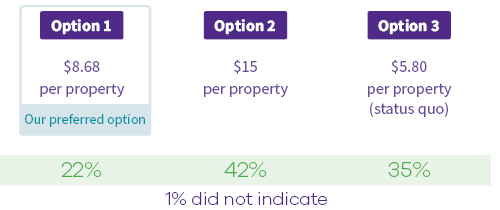
We’ve made a plan that matters, setting our work programme for the next 10 years, with an in depth look at the first three years.
Read the 2024-2034 Mahere Whānui Long Term Plan
The 2024-2034 Long Term Plan was adopted by the council on 27 June 2024.
Table of contents
Ka whakanuia ō whakaaro | Your views matter
We’re making the mighty Waikato even better, with you.
Following public consultation on our 2024-2034 Long Term Plan, councillors reviewed all submissions - and heard directly from those that wanted to present in person - before arriving at their final decisions in late May.
 Here's what our councillors decided
Here's what our councillors decided
Supporting documents and related consultation
Helping build a resilient Waikato
A resilient Waikato, where the community and economy are ready to respond to challenges, depends on strong foundations. For a resource rich region like the Waikato, that’s a healthy environment. Blair Keenan, our principal economist, talks resilience in our communities a lot, and he likes to explain using a Jenga metaphor.
“Think of the game of Jenga, where you’re taking blocks from the bottom to build up the top. Removing a block is like you’re using the natural environment to grow the tower. Each time you remove and place a block, you place stress on the tower. Choose the wrong block, or pull out too many, too fast, and the whole thing comes tumbling down.”
Waikato’s growing population places increasing demand on our natural resources, which has repercussions on our fresh water, coastal and marine, and land-based ecosystems. Climate change adds challenges too. And we know that, as we grow, demanding more from our resources will have consequences that it didn’t have when we were smaller. Doing more of the same thing is a risky strategy so we must do things differently.
The Jenga metaphor reminds us that the health of the environment, wellbeing of communities and strength of the economy are interwoven and interdependent. The tower is only as strong as its weakest blocks.
Choosing the right block and placing it safely is more challenging than ever before, so investing in resilience for our rohe (region) is critical. Blair says a healthy environment is a precondition for the region’s resilience: “If I continue with the Jenga metaphor, we might limit the number of blocks somebody can remove, think resource consents giving people the right to use a natural resource. Or we might ensure the underlying infrastructure supporting the tower is sound, think helping landowners fence and plant waterways, investing in pest management, bringing together resources, new ideas and know-how for sustainable farming practices.”
Building resilience is nothing new at Waikato Regional Council where environmental, scientific, policy and technical experts work every day managing flood protection infrastructure, generating and making sense of up-to-date data information, protecting and restoring environmental resources, planning transport networks, and so much more.
 We thought you might be interested in our work, so we gathered a few experts to share their stories about some of the mahi (work) we have planned over the next 10 years to support the region and its resilience.
We thought you might be interested in our work, so we gathered a few experts to share their stories about some of the mahi (work) we have planned over the next 10 years to support the region and its resilience.
















